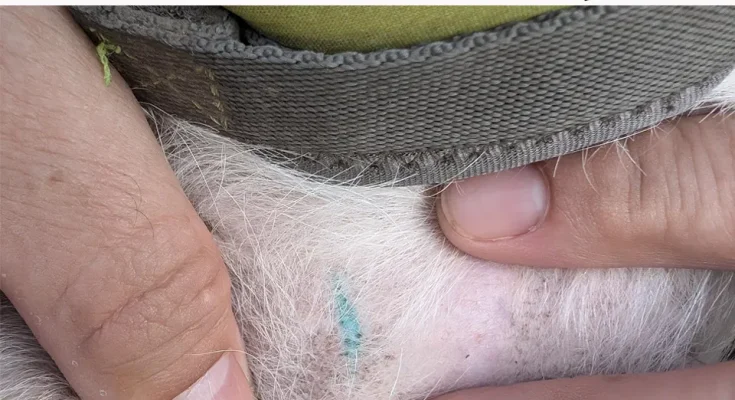After returning from a two-week work trip, I couldn’t wait to see my dog again. She had been staying at a 24/7 daycare facility, a place I trusted to keep her safe and happy. Everything seemed normal until I noticed something unexpected while giving her a belly rub — a small blue tattoo on her stomach. The sight left me both confused and concerned. Why would my dog have a tattoo?
Before letting fear take over, I decided to research the possible reasons. What I discovered shed light on practices that many pet owners don’t even know exist.
Why Pets Sometimes Have Tattoos
Although it may seem unusual, tattoos on pets are not as rare as one might think. Long before microchipping became the standard, tattoos were commonly used to provide permanent identification. Today, veterinarians often use small blue or green tattoos as a simple way to show that a pet has been spayed or neutered. This is done to prevent unnecessary surgeries in the future.
Services at 24/7 Pet Daycare Facilities
Modern daycare and boarding centers often go beyond simple playtime and feeding. Many work closely with veterinarians to provide health checkups, grooming, and even medical procedures. Depending on the facility, a tattoo might appear if veterinary services were included during your dog’s stay. This is why understanding the full scope of services offered by your chosen daycare is important.
The Meaning of a Blue Tattoo
The color and location of a tattoo usually hold specific meaning. A small blue mark on a dog’s lower belly is widely recognized in veterinary medicine as an indicator that the pet has been spayed or neutered. While this practice is standard, it is highly unusual for any procedure to be carried out without the owner’s explicit permission. That’s why the next step is always to investigate further.
Possible Explanations
There are several reasons why your dog may have come home with a tattoo. It could be a marker indicating a spay or neuter procedure, a form of identification used in the past, or a small note from a medical procedure designed to prevent confusion later. In very rare cases, it might also be the result of a communication error or misunderstanding between the facility and the pet owner.
What to Do Next
If you ever discover something unexpected like this, the first thing to do is check your dog’s medical records for any mention of tattoos or procedures. Documenting the tattoo with clear photos is also useful in case further discussions are needed. Once you have this information, reach out to the daycare and ask about any services your dog may have received while in their care. Direct and open communication is the best way to clarify what happened.
Ethics and Pet Care
Any permanent alteration to a pet’s body should always be done with the owner’s consent. If a tattoo was applied without permission, it raises questions about the facility’s practices and whether proper procedures were followed. This makes it important to not only understand what happened but also to ensure that your pet’s well-being remains the priority in all future care decisions.
Finding Support
It can feel unsettling to discover something you weren’t expecting when it comes to your pet. However, you are not alone. Many pet owners share similar experiences in online communities or local groups, and connecting with others can provide both reassurance and valuable advice.
Final Thoughts
Seeing a tattoo on your dog for the first time can be surprising, but it doesn’t always mean something harmful has occurred. In most cases, it is simply a medical marker used by veterinarians for clarity in the future. By staying informed, reviewing your dog’s records, and maintaining clear communication with pet care providers, you can make the best decisions for your furry companion’s health and happiness.




